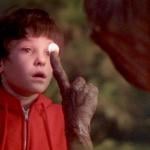How do you define “kitsch”?
If your answer is “A savory, open-faced pastry crust pie with a savory custard filling of cheese, meat and vegetables,” then you need to consult a dictionary.
Conversations about kitsch are tricky business. What exactly is it? Can any art that makes you feel warm and fuzzy be called “kitsch”?
Usually, when the subject comes up, I end up going back to Gregory Wolfe’s editorial on the work of Thomas Kinkade. It’s always helpful.
Today, thanks to a Tweet and a link from Philip Tallon, author of The Poetics of Evil and co-editor of The Philosophy of Sherlock Holmes, I’ve discovered something else very helpful…
In a post for Transpositions, Tim Gorringe writes:
“In … The Unbearable Lightness of Being, Milan Kundera says two things about kitsch: first, that it represents ‘the absence of shit in the world’ – in other words, the refusal to be honest about pain and evil; second, that looking at kitsch two tears fall, one at the subject and the other which notes what a tender emotional being I am to be moved by this. Kitsch, we can say, is a particularly vicious version of emotivism.
…
Kitsch, in fact, is one of Satan’s prime stratagems to undermine the gospel, to turn it from something which turns the world upside down to a cheap tinsel decoration which helps us feel ‘good about ourselves’ (one of the mantras of our contemporary culture) whilst allowing injustice to go unchecked.”
Yes. What he said.











